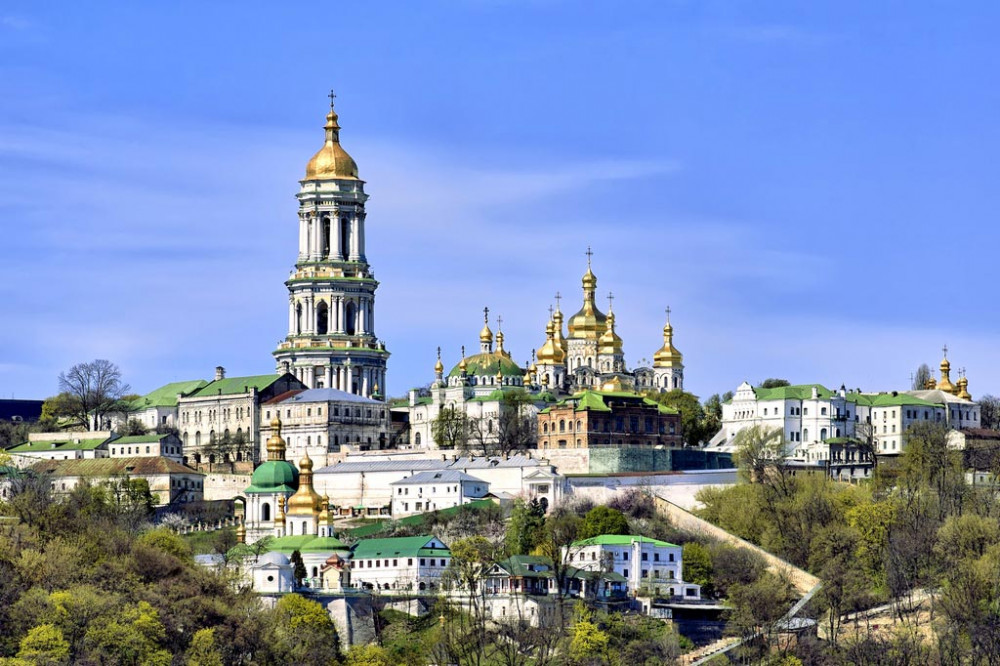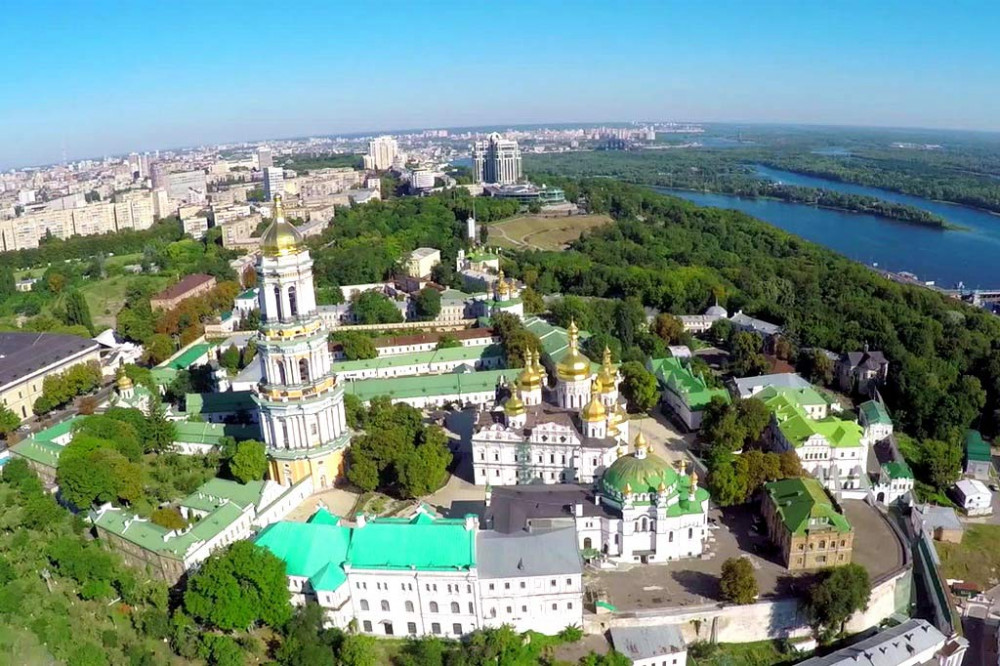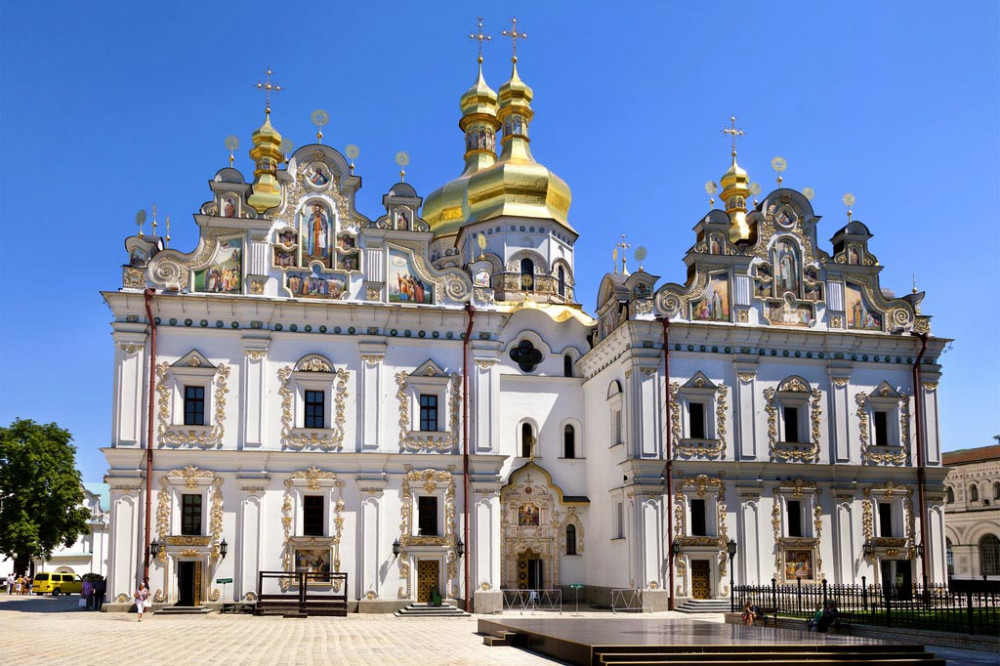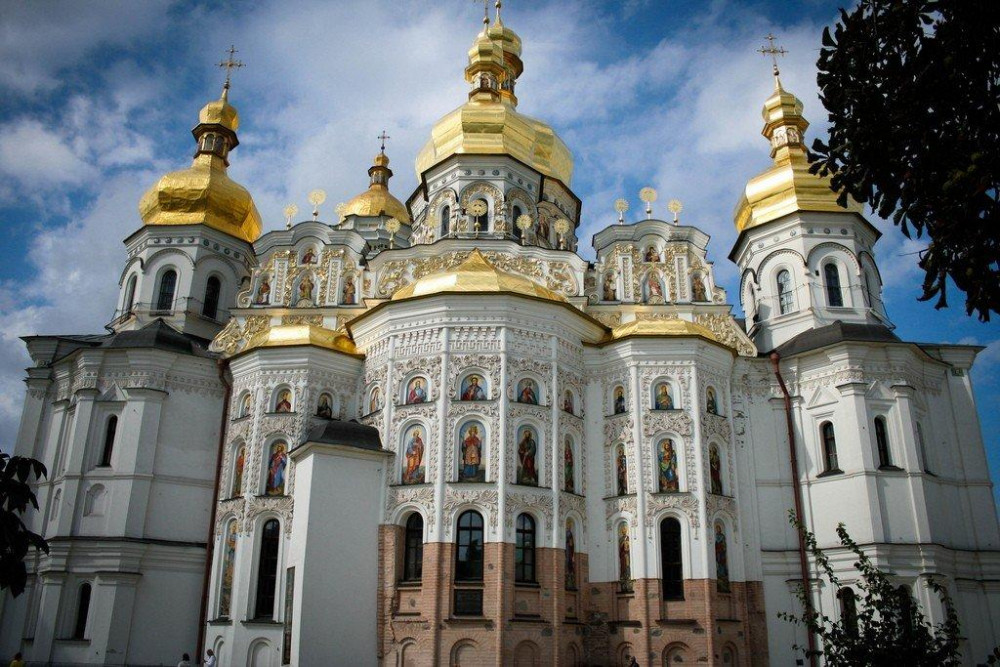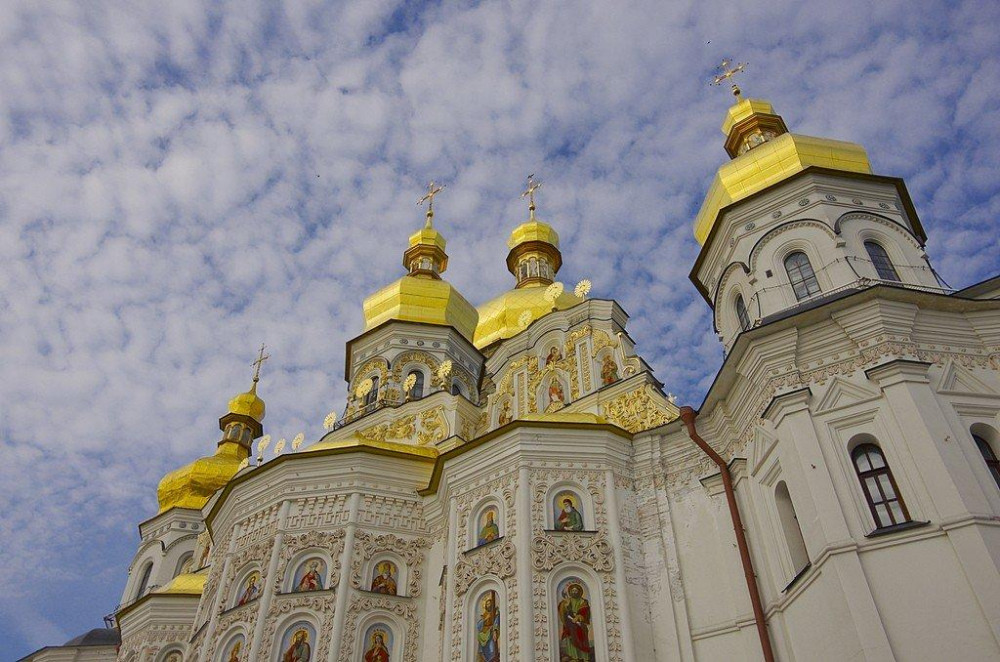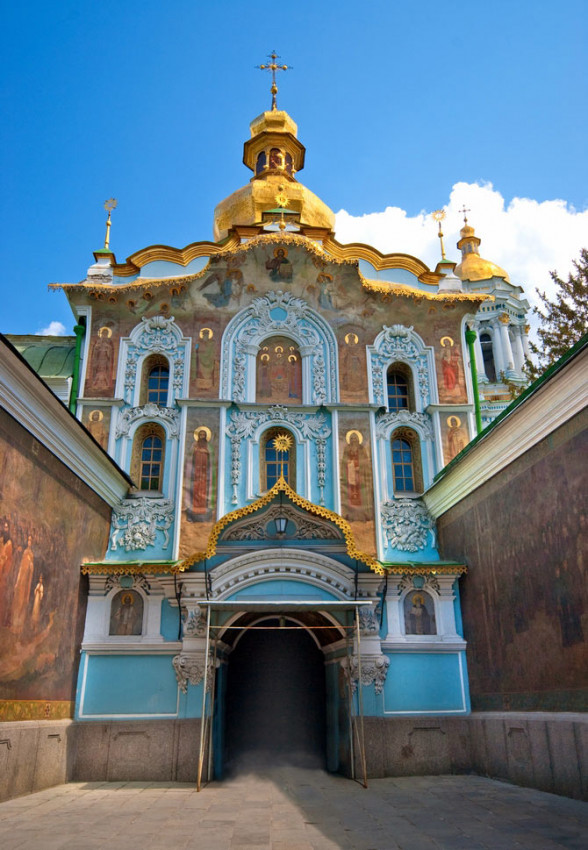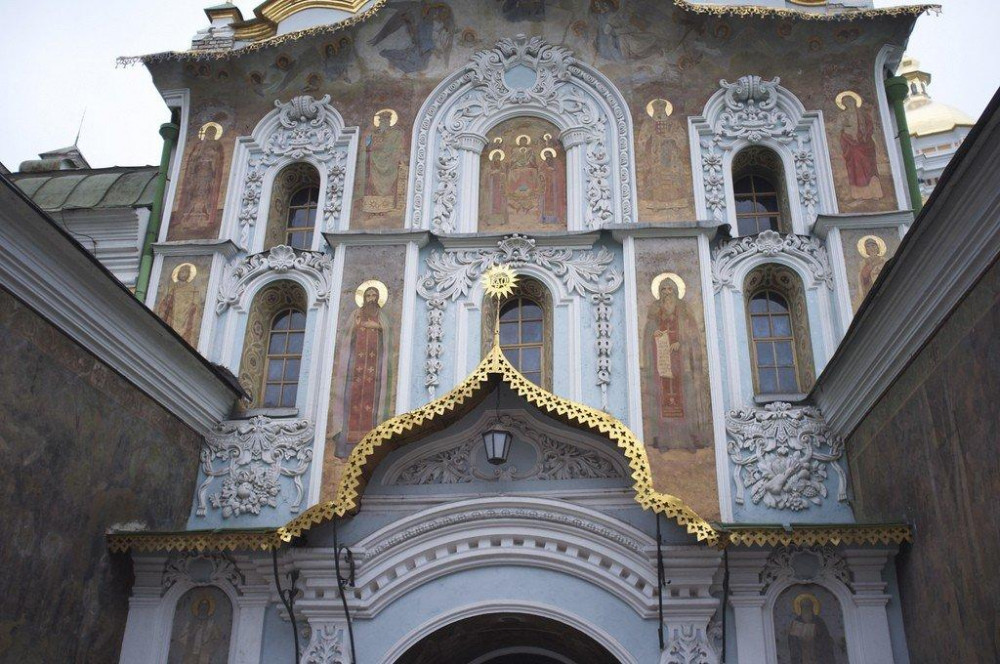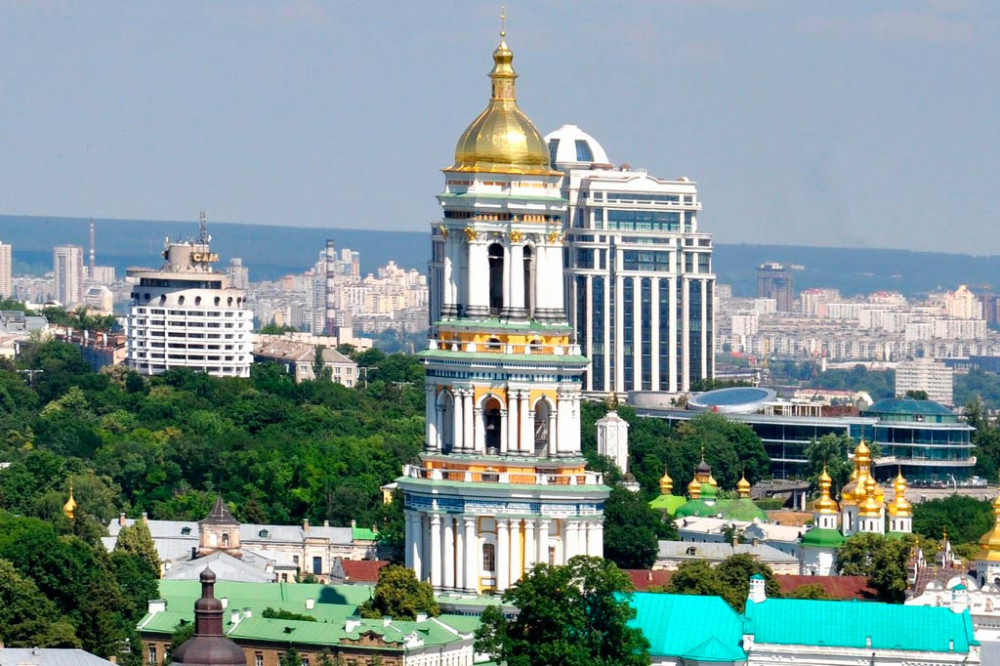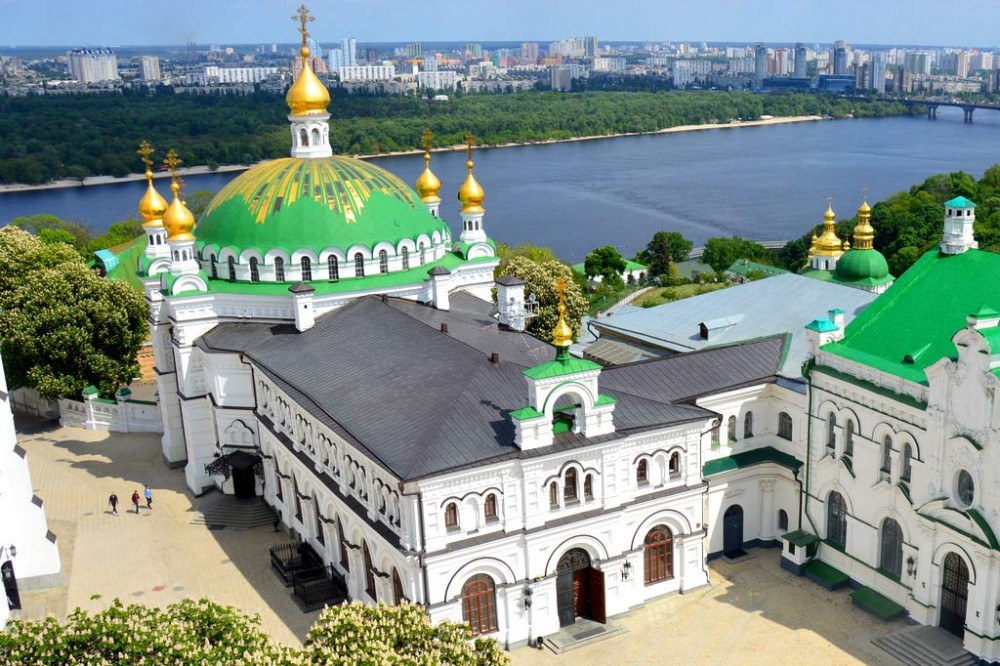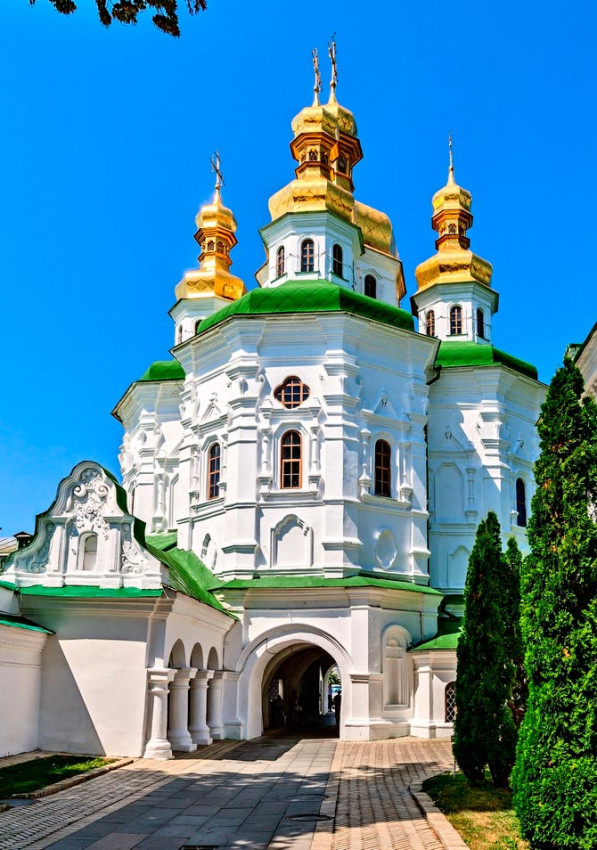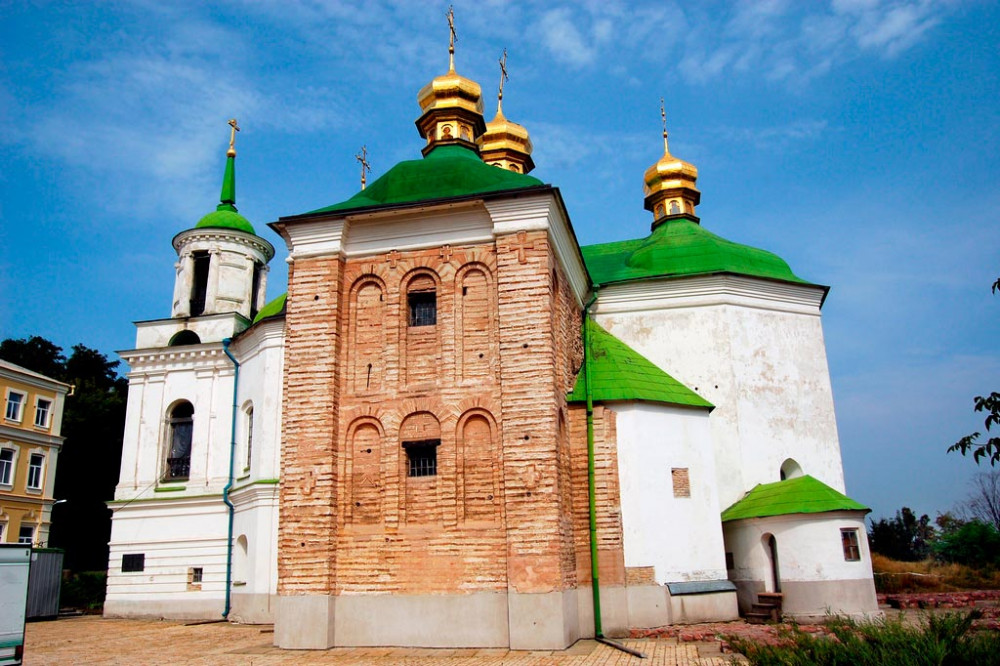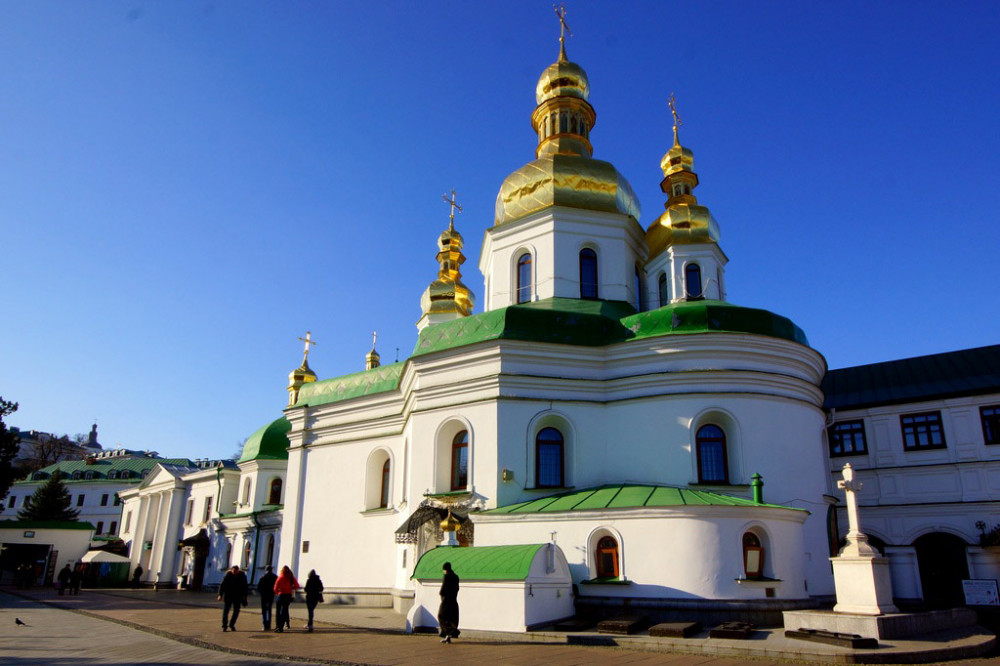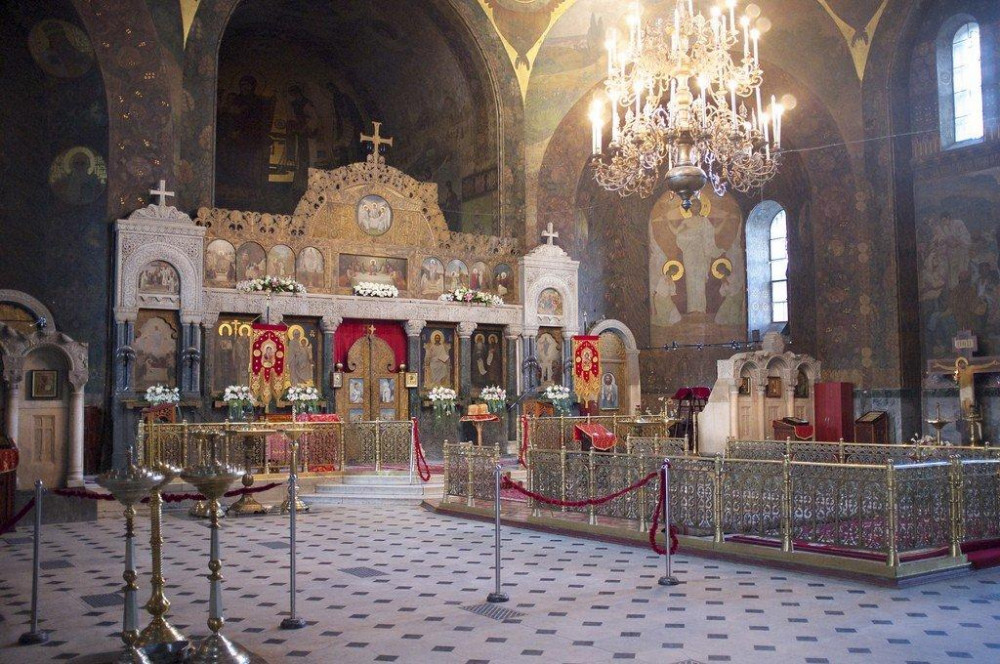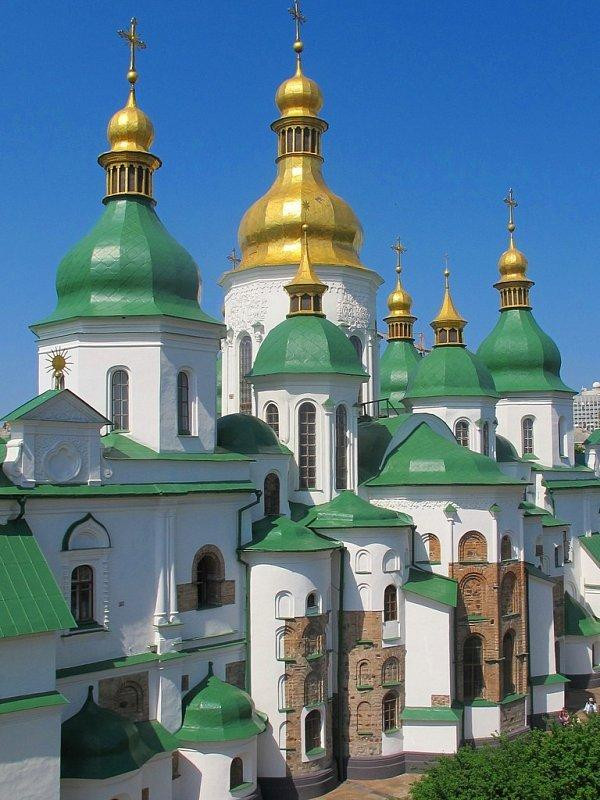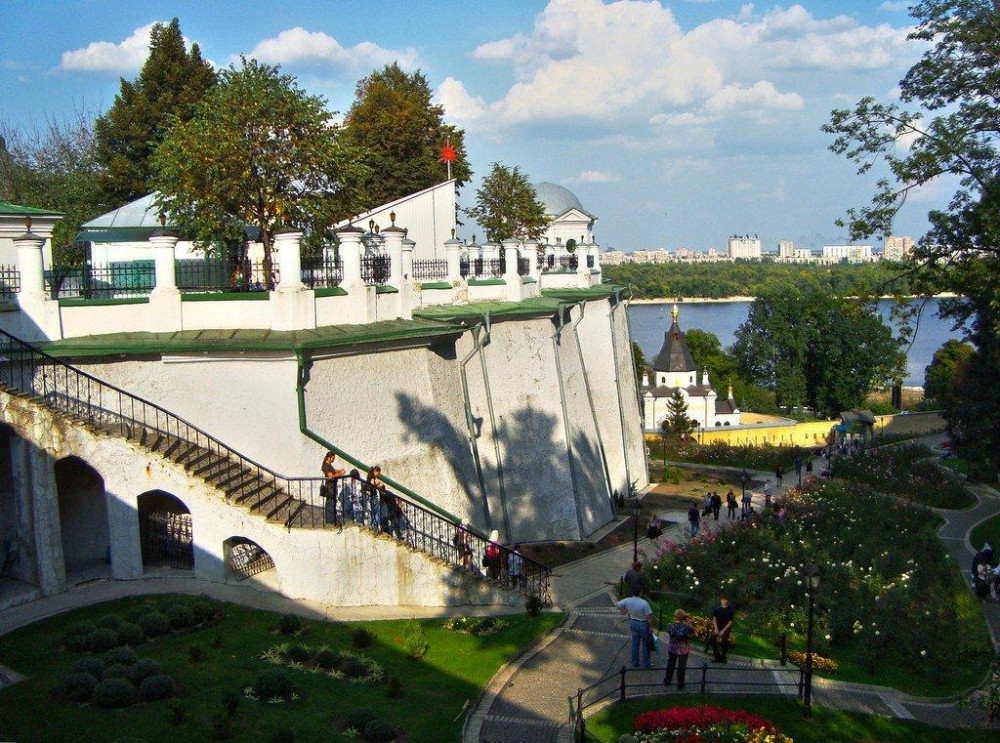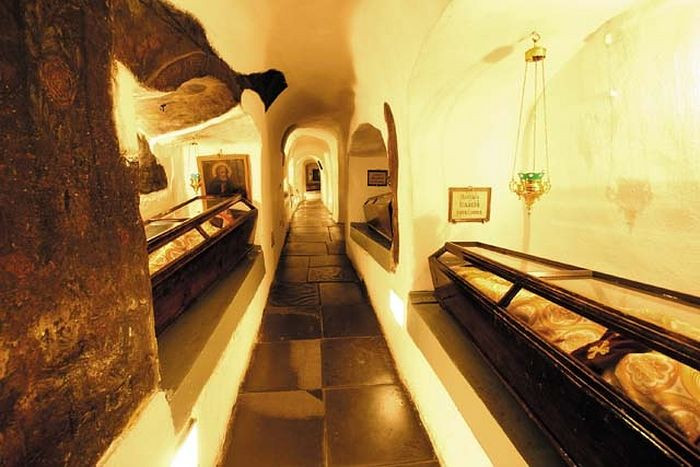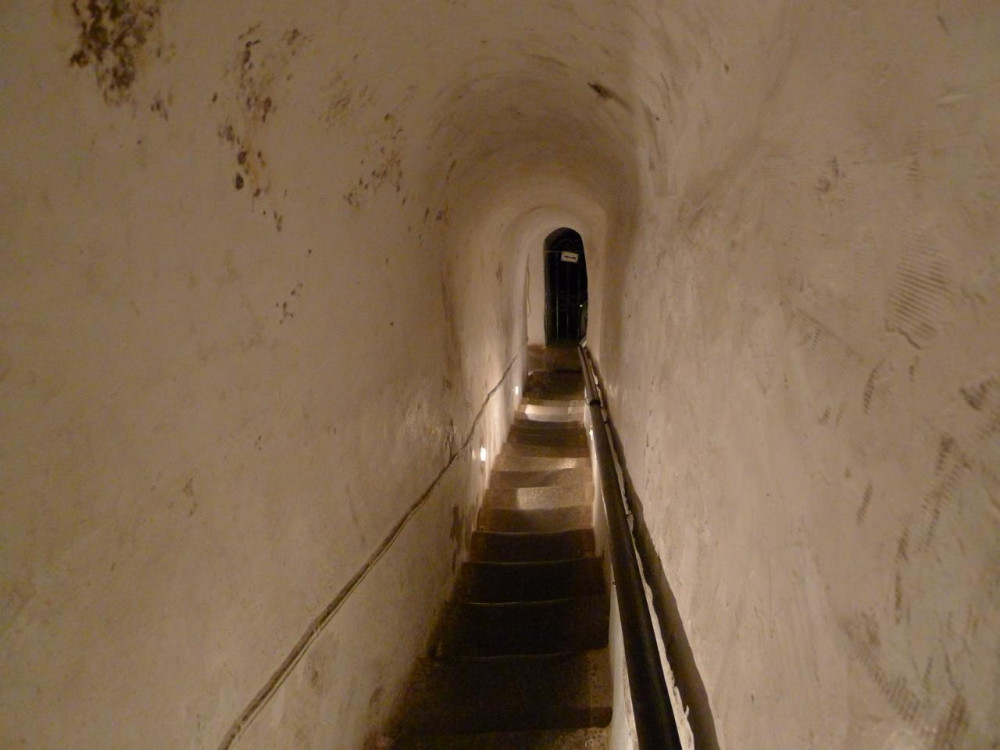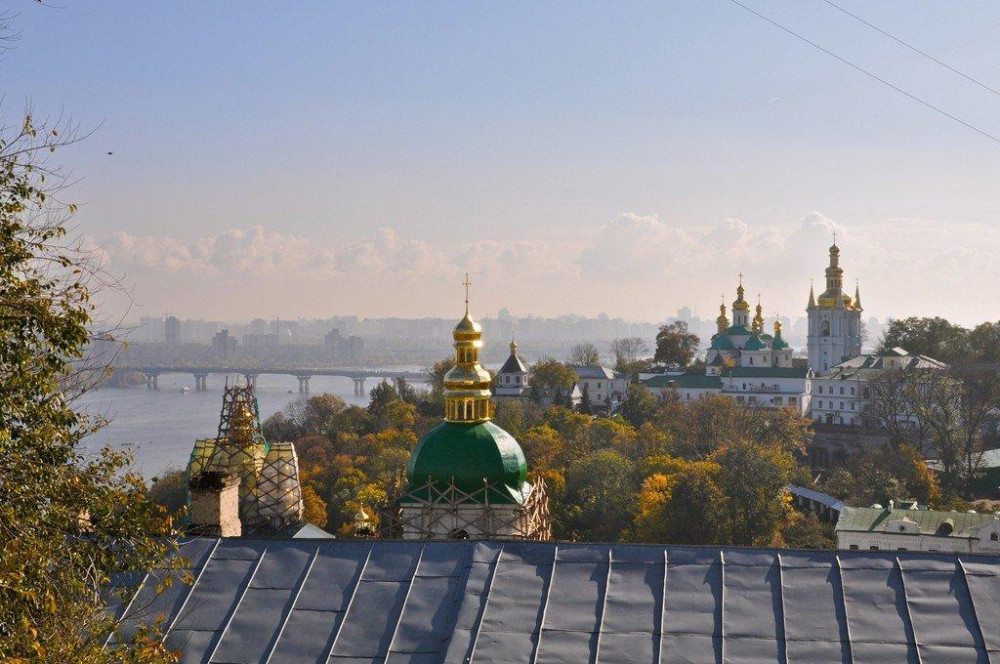History
On the right bank of the Dnieper River, the unsurpassed Kiev-Pechersk Lavra shines from afar, in the Pechersk district of Kiev, which is the oldest district of the capital. The name of the area is connected with the fact that the first monks once lived here in caves (“pechery” is Slavonic for “caves”). According to the Primary Chronicle, in the early eleventh century, the monk Anthony from Esphigmenou Monastery on Mount Athos, originally from Liubech of the Principality of Chernigov, returned to Rus' and settled in Kiev. He chose a cave at the Berestov Mount that overlooked the Dnieper River, and a community of disciples soon grew. One of his disciples, St. Theodosius, became the abbot. But the monastic habitation received status of a lavra in the twelfth century.
By about the second half of the eleventh century, the monastery had become the largest architectural center in Kievan Rus’. Tile and mosaic workshops were located here. 100 years later, namely at the end of the twelfth century, defensive and fortification ramparts with towers and battlements were erected around the Kiev Caves Lavra.
During the same period, the Holy Trinity Gate Church was built on the territory of the monastery, which is one of the six architectural monuments from the time of the reign of grand princes in Kievan Rus’ that has survived to the present day. The Kiev Caves Lavra survived the Tatar-Mongol invasions, as well as the very difficult periods of Lithuanian and Polish rule. It partially survived the Second World War. However, despite the destruction and damage, the Lavra has been beautifully rebuilt and restored by the monks who currently reside there.1 Its caves preserve the relics of more than 400 saints, including the famous chronicler Nestor, author of the Tale of the Bygone Years—a history of ancient Rus’—are kept here. There is no other place in the world where so many incorrupt relics rest altogether.
The Churches of the Kiev Caves Lavra
On the territory of the Kiev Caves Lavra, which is registered as a national historic-cultural preserve (sanctuary) according to Ukrainian law, there are twenty churches of different sizes and ages, of various interiors and styles. The most famous are the Holy Trinity Church, the Dormition Cathedral, which adorns the Cathedral Square, and the Refectory Church. Also of interest is the main Lavra bell tower, from where you can see all of Kiev. The Holy Trinity church is located above the entrance to the Holy Lavra. This church was built at the beginning of the twelfth century. Despite its small size, depicted on its walls are 120 biblical stories.
The church’s architecture includes multi-profile cornices, pilasters, ceramic rosettes. And, of course, the beautiful blue dome with golden stars is iconic. On the main cathedral square of the Kiev Caves Lavra stands the Dormition Cathedral, which dates back to the twelfth century. Of course, at that time it looked very different from what it does today. Then it was a rectangular one-story building with one dome. The Moscow architect Vasiliev, after a fire in the eighteenth century, united all the components of the cathedral under one roof. The Church became a square, two-story building with seven gilded domes. In the Dormition Cathedral there are up to three hundred graves of famous ecclesiastical and historical figures.
The Dormition Cathedral was the center of the entire great architectural composition of the Lavra; however, in early November 1941, when German generals and Slovak President Josef Tiso visited the Lavra, the church was blown up and the cathedral was demolished. In November 1998, on the basis of available archival data, its reconstruction began, with funds collected by residents of the city of Kiev, and was completed in 2000. Thus, today the Dormition Cathedral is an exact copy of the cathedral of the eleventh century.
This cathedral is famous for its altar, with an absolutely wonderful iconostasis, twenty-five meters long and twenty-two and a half meters high. There are several world-famous icons, namely, the icons of the Mother of God, Jesus Christ, and the Dormition of the Most Holy Mother of God. There are about sixty-nine icons in total.
There are also other very interesting buildings on Cathedral Square. There is the residence of the metropolitans who lived here until 1918, and the Dormition Church. Now the residence building houses a museum dedicated to Ukrainian decorative and applied art.
Next to the metropolitans’ residence there is a small two-story building. Previously there was a refectory on this site, built at the end of the nineteenth century. Not far from the refectory, a Refectory Church was built, which today is both a museum and a functioning church. This church is considered one of the latest buildings, having a large, octagonal nave. In the church there is a very beautiful marble iconostasis and an icon of Sts. Anthony and Theodosius of the Caves.
Another unique structure on the territory is the Lavra Bell tower, constructed from 1731 to 1745. The height of the bell tower is about ninety-six meters, the depth of the granite foundation is about eight meters, the thickness of the walls is seven meters, and the diameter is about twenty-nine meters. The bell tower consists of four tiers, decorated each in its own way. The huge dome of the bell tower has an area of more than five hundred square meters, and is completed by the cross, four and a half meters high. In December 1903, a chiming clock was installed on the fourth tier of the bell tower, weighing four and a half tons. In the second tier there was a public library. At one time, the bell tower was the tallest building in the city of Kiev. From here you can gaze at the left bank city, and of course, the entire Lavra.
In 1990, the Kiev Caves Lavra was added to the UNESCO World Heritage List. Each of the famous monastery’s buildings is a unique structure. The Kiev Caves Lavra has withstood all onslaughts, and has always remained a help and support to the Orthodox faithful. In modern times, forty million pilgrims and tourists from all over the world have visited this spiritual and architectural jewel.
Text translated and adapted from Puti-dorogi.ru
1 These monks, who put so much effort and means into restoring the monastery after the fall of communism in Ukraine, are currently being expelled by the current Kiev regime.

